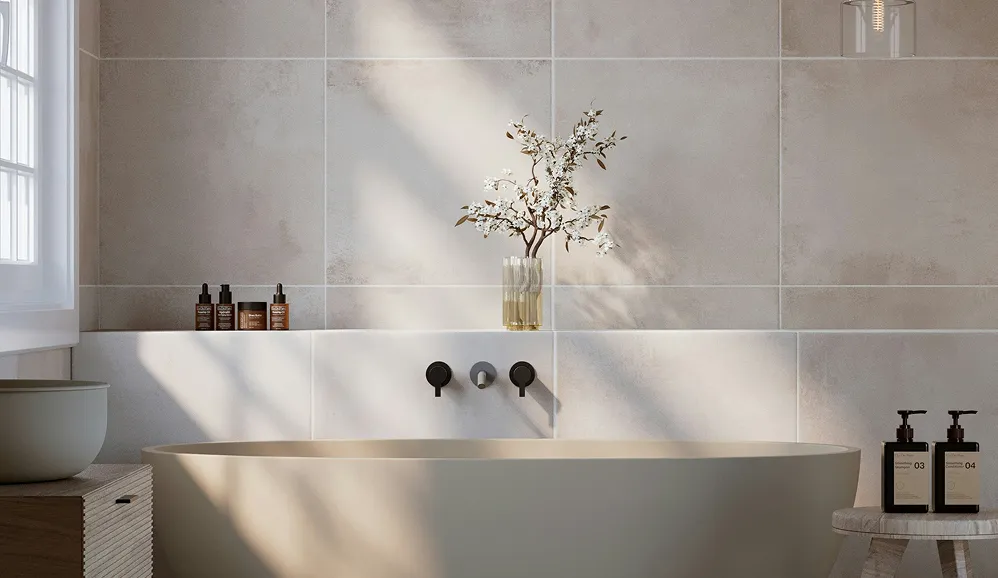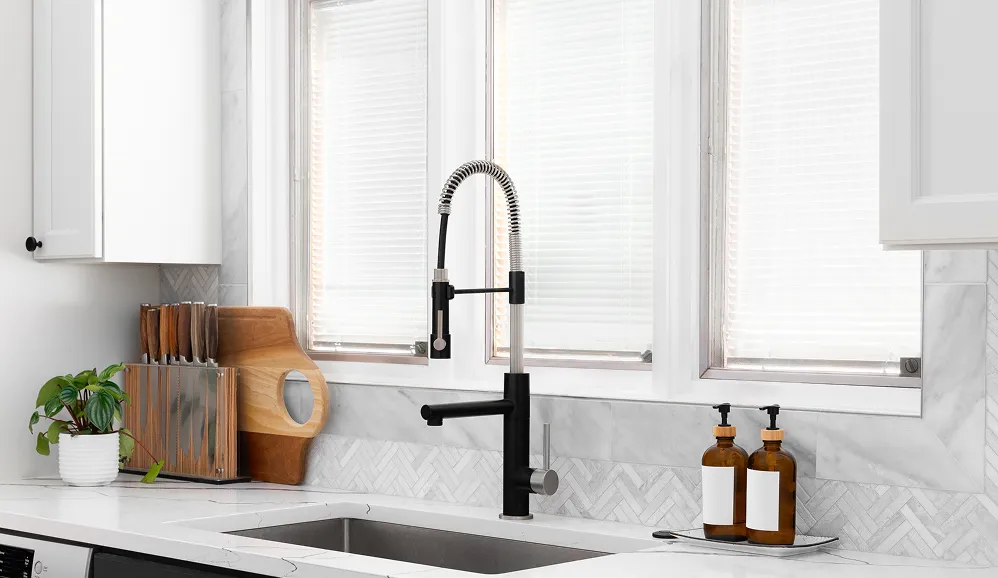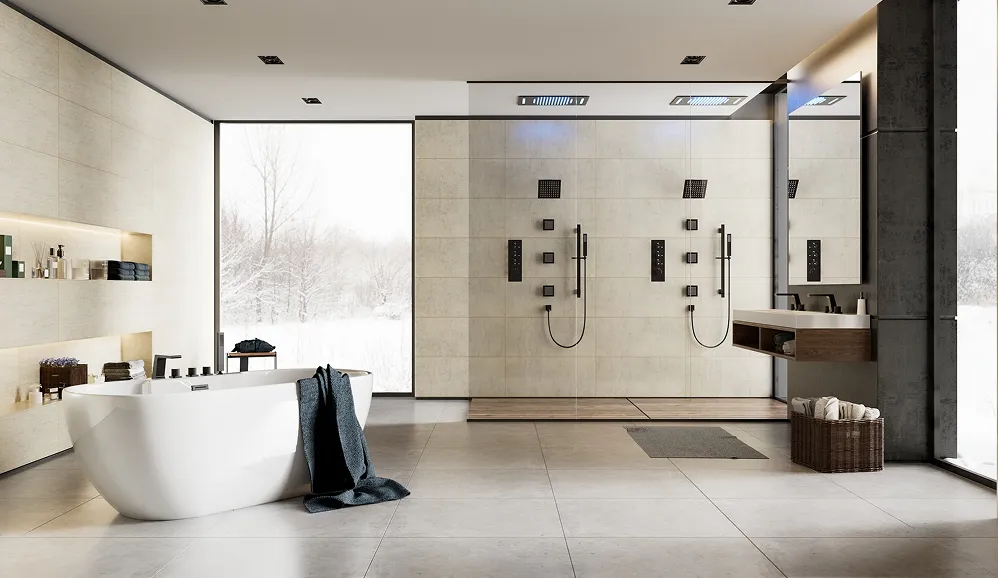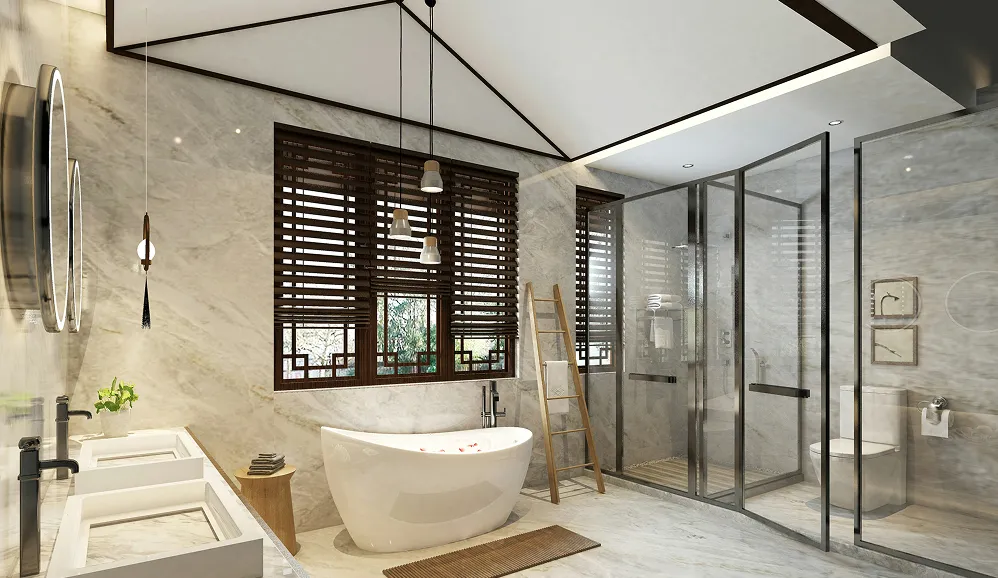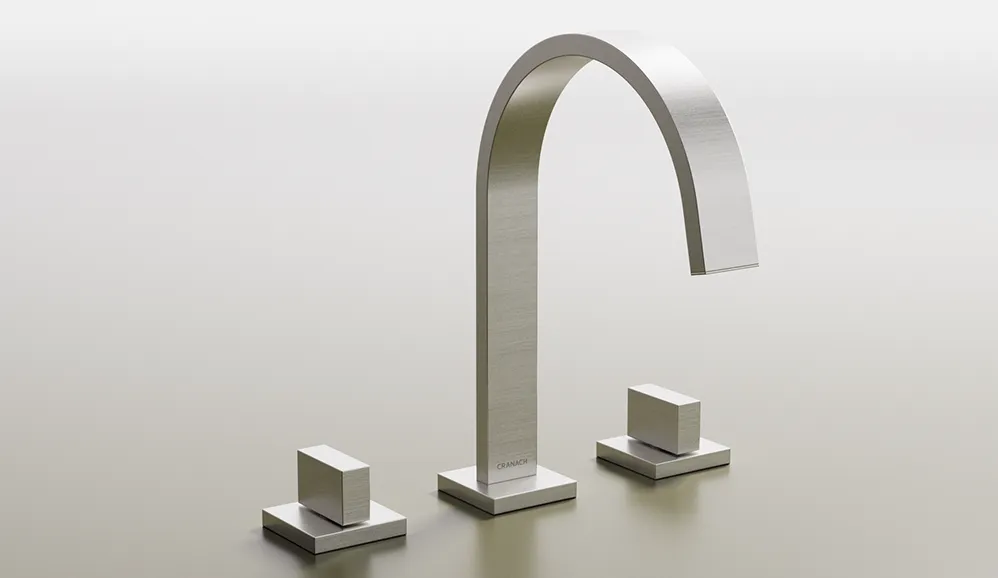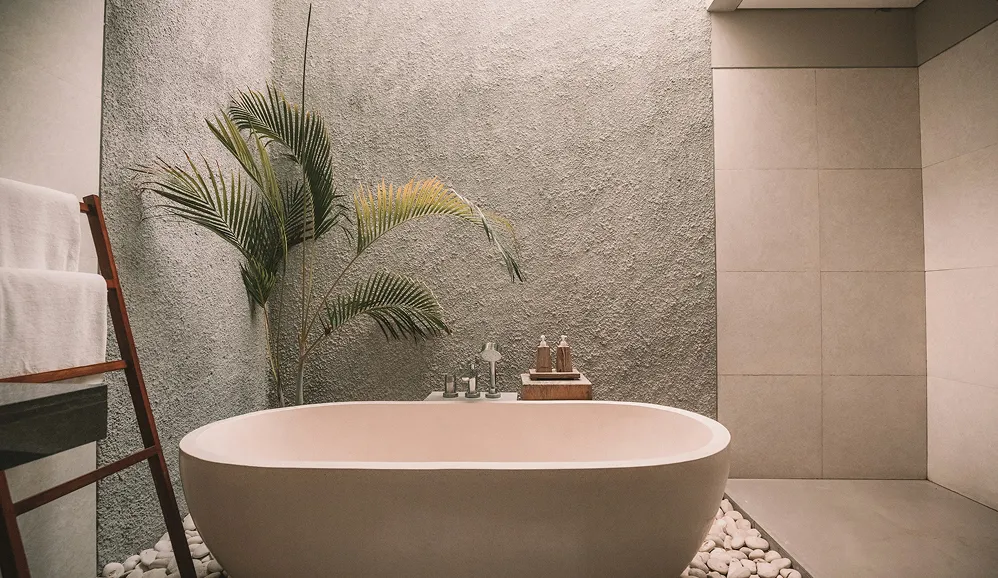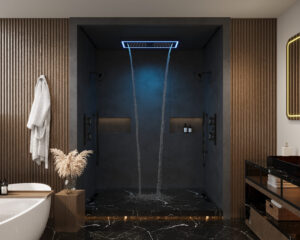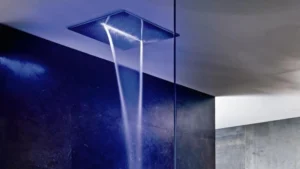Exploring the Core of Your Faucet: A Look at Valve Types
This guide provides a quick overview of the various types of faucet valves, equipping you with the knowledge to choose the right one for your project or repair. Learn about the six most common types of faucet valves: ceramic disc, ball, compression, cartridge, thermostatic, and pressure balance. Understanding these different mechanisms is crucial for troubleshooting leaks and ensuring optimal performance. Whether you’re a homeowner, plumber, or contractor, this list helps you diagnose problems and select the correct replacement parts. Here’s a breakdown of each valve type:
1. Ceramic Disc Valve
The ceramic disc valve represents a significant advancement in faucet technology, earning its place as a leading choice in modern plumbing fixtures. If you’re considering different types of faucet valves for your next project or remodel, understanding the ceramic disc mechanism is crucial. This valve type offers a compelling blend of durability, precision, and ease of use, making it a popular option for homeowners, contractors, and interior designers alike.
This valve operates on a simple yet effective principle: two highly polished ceramic discs, one stationary and one rotating, control the flow and temperature of water. A quarter-turn of the handle (90 degrees) is all it takes to go from fully off to full flow. This precise control distinguishes ceramic disc valves from older counterparts like compression or ball valves. Learn more about Ceramic Disc Valve
Features and Benefits:
- Precision Control: The ceramic discs provide exceptionally fine control over both water flow and temperature mixing, eliminating the guesswork often associated with other types of faucet valves.
- Longevity: Built to last, these valves typically boast a lifespan of 20-30 years, significantly reducing the need for replacements and minimizing long-term maintenance costs. This durability makes them particularly appealing for contractors and builders aiming for lasting quality in their projects.
- Smooth Operation: The precise engineering of the ceramic discs ensures a smooth, effortless handle movement, enhancing the overall user experience.
- Resistance to Hard Water and Mineral Buildup: Unlike some valve types that are susceptible to mineral deposits and clogging, ceramic disc valves are designed to resist hard water buildup, ensuring consistent performance over time. This is a significant advantage in areas with hard water, reducing the frequency of maintenance and prolonging the valve’s lifespan.
- Leak Resistance: The tight seal created by the ceramic discs provides excellent resistance to leaks and drips, a common problem with older valve technologies.
Pros:
- Long-lasting and virtually maintenance-free
- Smooth, precise operation for both flow and temperature control
- Rarely leaks or drips
- Highly resistant to wear and mineral deposits
Cons:
- Generally more expensive than other valve types like compression or ball valves, representing a higher upfront cost.
- Susceptible to damage from debris: While durable, if debris enters the valve, it can damage the ceramic discs. Plumbers often recommend installing sediment filters to mitigate this risk.
- Cartridge replacement: While generally long-lasting, if a problem does arise, often the entire cartridge needs replacing rather than individual parts. This can add to the repair cost.
Comparison with other types of faucet valves: Compared to traditional compression valves and ball valves, ceramic disc valves offer superior durability, smoother operation, and more precise control. While the initial cost may be higher, the long-term benefits often outweigh the price difference.
Implementation/Setup Tips: While professional installation is recommended, especially for complex faucet designs, many homeowners with basic plumbing skills can install faucets with ceramic disc valves. It’s essential to follow the manufacturer’s instructions carefully and ensure the valve is properly seated and aligned to prevent leaks and ensure optimal performance. Resources like Moen’s cartridge identification guide can be helpful for identifying and understanding different cartridge types.
Ultimately, the ceramic disc valve offers a compelling combination of performance, longevity, and ease of use. Its position as a leading choice in the world of faucet valves is well-deserved, making it an excellent option for a variety of applications from residential kitchens and bathrooms to commercial settings.
2. Ball Valve
The ball valve is a popular choice for kitchen sink faucets, recognized for its single-handle operation that controls both water flow and temperature. This type of faucet valve uses a hollow, slotted ball inside a socket to manage the water. When you move the handle, the ball rotates, aligning its slots with the hot and cold water inlets. This mechanism allows you to adjust the temperature and flow rate simultaneously with one hand. This design makes it a highly practical choice for busy kitchens and is a significant reason why it’s included in our list of types of faucet valves.
The ball valve was the first washerless faucet design. This innovation eliminated the need for traditional rubber washers, which were prone to wear and tear. Inside the ball valve, you’ll find slots, springs, rubber seals, and washers working together to control the water flow. While this design is generally reliable, these internal components can eventually wear out, requiring maintenance or replacement. For those interested in the technical details, Learn more about Ball Valve.
One of the main advantages of the ball valve is its ease of use. The single-handle operation is intuitive and convenient, especially when your hands are full. It is also generally more durable than older compression valves. Compared to ceramic disc valves, however, ball valves may not offer the same level of precise temperature control. While ball valves are relatively easy to repair with readily available replacement kits, they are prone to leaking over time as the O-rings and seals wear down. This means occasional maintenance is required to ensure optimal performance. Delta Faucet, a pioneer of this technology, continues to innovate in this space. Pricing for faucets with ball valves varies depending on the brand, finish, and features, but they are generally a mid-range option in terms of cost. For homeowners, contractors, and plumbers, understanding the nuances of different types of faucet valves, including the ball valve, is crucial for making informed decisions during installation or remodeling projects.
3. Compression Valve
The compression valve earns its place on this list of faucet valve types as the stalwart veteran, a testament to simple, mechanical functionality. Recognizable by its two separate handles for hot and cold water, this traditional valve is commonly found in older homes and basic fixtures. Understanding its operation, benefits, and drawbacks can be invaluable for anyone involved in home construction, renovation, or even basic plumbing maintenance.
How it Works:
At the heart of the compression valve is a rubber or silicone washer. When the handle is turned clockwise, this washer compresses against a valve seat, effectively shutting off the water flow. The multiple turns required to fully open or close the valve are a characteristic feature of this design.
Features and Benefits:
- Simple Mechanical Operation: The compression valve’s straightforward design makes it easy to understand and troubleshoot. This simplicity translates to lower manufacturing costs, making them an inexpensive option for budget-conscious projects.
- Easy Repairs: When leaks occur, typically due to washer wear, repairs are usually straightforward and inexpensive. Replacement washers are readily available at most hardware stores, and replacing them requires minimal tools and expertise. This ease of repair is a significant advantage, especially for homeowners who prefer to handle minor plumbing tasks themselves.
- Works Well in Low Water Pressure: Compression valves can function effectively even in homes with lower water pressure, a factor that can be important in some areas.
- Familiar Operation: Most people are familiar with the operation of compression valves, having encountered them in older homes or basic bathroom and kitchen fixtures.
Drawbacks:
- Requires More Physical Effort: The multiple turns needed to operate a compression valve can be inconvenient, especially for individuals with limited hand strength or mobility. This contrasts sharply with the single-lever operation of more modern valve types.
- Prone to Leaking: The rubber or silicone washers are wear items and will eventually need replacement. This can lead to dripping faucets if not addressed promptly. Hard water can accelerate washer wear, requiring more frequent maintenance.
- Less Precise Temperature Control: Achieving the desired water temperature can be challenging with compression valves, requiring careful adjustments of both hot and cold handles. Modern valves offer significantly better temperature control.
- Requires More Frequent Maintenance: Due to the reliance on the rubber washer, compression valves typically require more frequent maintenance compared to other types of faucet valves.
Practical Applications and Use Cases:
Compression valves are often found in utility sinks, older bathroom faucets, and outdoor spigots. While less common in new construction, they remain a viable option for those seeking a basic, affordable solution. They are particularly suitable for applications where precise temperature control is not critical.
Comparison with Other Valves:
Compared to cartridge, ceramic disc, or ball valves, compression valves are less sophisticated and offer less precise control. However, they are significantly easier and cheaper to repair. If budget is a primary concern and ease of repair is valued, compression valves remain a relevant option.
Implementation/Setup Tips:
When installing a compression valve, ensure the washers are properly seated to prevent leaks. Over-tightening can damage the valve seat, so apply firm but not excessive pressure.
Pricing:
Compression valve faucets are typically the most affordable type of faucet, ranging from as low as $15 to around $50 for basic models. Repair kits containing replacement washers are also very inexpensive, usually costing just a few dollars.
Website:
For more information on various faucet types, including compression valves, you can visit American Standard. (Note: While this link points to a general faucet page, it can be a starting point for exploring different valve options.)
4. Cartridge Valve
Cartridge valves represent a significant step up from traditional compression valves in terms of performance and ease of use. This type of faucet valve uses a cylindrical cartridge, containing slots and holes, to control the flow and temperature of water. Instead of relying on washers being compressed against a valve seat, the cartridge moves up, down, or pivots within the valve body to align these slots and holes with the water inlets. This mechanism offers precise control with less than a full turn of the handle, making them a popular choice for modern faucets. These valves are available in both single-handle and double-handle configurations, catering to various faucet designs and user preferences. Understanding the different types of faucet valves, including cartridge valves, is essential for anyone involved in home renovation, plumbing, or simply choosing the right faucet.
One of the major advantages of the cartridge valve is its ease of replacement. When a cartridge valve fails, typically after a moderate lifespan of 15-20 years under normal use, the entire cartridge unit can be swapped out. This eliminates the need to disassemble the valve and replace individual components like washers, significantly simplifying repairs for homeowners and plumbers alike. While individual components like O-rings within the cartridge can still wear out, replacing the entire unit is a relatively quick and straightforward process. Learn more about Cartridge Valve for specific models. This characteristic alone makes cartridge valves a desirable option, particularly for busy households and those less comfortable with complex plumbing tasks.
Compared to compression valves, cartridge valves offer more reliable and consistent performance, with less propensity for dripping. Their precise control over water flow and temperature is a significant advantage, especially in kitchens where precise adjustments are often necessary. However, they are typically more expensive to replace than basic washers used in compression valves. Also, different faucet brands and models often use different cartridges, so it’s crucial to find the correct replacement cartridge for your specific faucet. While generally durable, they typically don’t match the extended lifespan of ceramic disc valves.
For homeowners, contractors, and builders, understanding the strengths and weaknesses of cartridge valves is vital for selecting the right faucet. While the initial cost might be higher, the ease of maintenance and precise control offered by cartridge valves make them a worthy investment for many applications. While pricing varies depending on brand and model, expect to pay a bit more for this type of valve compared to compression valves. Ensure you have the correct model number for your faucet when searching for replacement cartridges.
Pros:
- Reliable and consistent performance
- Easy to replace the entire cartridge
- Precise control with limited motion
- Less prone to dripping
Cons:
- More expensive to replace than basic washers
- Different cartridges for different faucet brands/models
- O-rings can still wear out over time
- Typically less durable than ceramic disc valves
5. Thermostatic Valve
When exploring the various types of faucet valves available for your next project, the thermostatic valve stands out as a premium option delivering enhanced safety and comfort. Unlike standard valves, thermostatic models excel at maintaining a consistent water temperature regardless of fluctuations in water pressure. This makes them a popular choice for showers and high-end bathroom fixtures where precise temperature control is paramount. This type of faucet valve is a significant upgrade over basic pressure-balancing or cartridge valves, offering superior control and peace of mind.
A thermostatic valve achieves this precise temperature regulation through a built-in thermostat, typically containing a wax or bimetal element. This element reacts to temperature changes, expanding and contracting to automatically adjust the mix of hot and cold water flowing through the valve. This dynamic adjustment ensures the water temperature remains constant even if someone flushes a toilet or uses another water source in the house. For example, imagine starting your shower at a comfortable 105°F. With a thermostatic valve, that temperature will remain constant, preventing the unpleasant and potentially dangerous temperature spikes that can occur with other types of faucet valves.
Key Features and Benefits:
- Automatic Temperature Maintenance: This is the core function and primary benefit of a thermostatic valve. Set your desired temperature, and the valve takes care of the rest, automatically adjusting the hot and cold water mix to maintain consistency.
- Anti-Scald Protection: A crucial safety feature, especially for households with children or elderly individuals. The thermostatic valve prevents scalding by quickly reacting to pressure changes and maintaining a safe water temperature, even if the cold water supply pressure suddenly drops.
- Separate Temperature and Volume Controls: These valves often offer separate controls for temperature and water volume, allowing for greater customization and user control.
- Energy Efficiency: By minimizing the time spent adjusting water temperature, thermostatic valves reduce water waste, contributing to lower utility bills.
- Enhanced Comfort and Convenience: Consistent temperature delivers a more comfortable and enjoyable showering experience, eliminating the need for constant manual adjustments.
Pros and Cons:
Pros:
- Superior temperature consistency and safety
- Prevents scalding if cold water pressure drops
- Energy efficient by reducing water waste
- Enhanced comfort and convenience
Cons:
- Significantly more expensive than basic valve types (expect to pay significantly more, potentially hundreds of dollars depending on the brand and features)
- More complex installation requirements, often necessitating professional plumbing services
- May require professional maintenance for optimal performance
- Requires adequate water pressure to function properly
Technical Requirements and Installation:
Installation of a thermostatic valve is more complex than that of a standard valve and often requires a qualified plumber. Learn more about Thermostatic Valve Ensuring adequate water pressure is also essential for proper functionality. Check the manufacturer’s specifications for precise pressure requirements.
Comparison with other types of faucet valves:
Compared to pressure-balancing valves, thermostatic valves offer more precise temperature control and enhanced anti-scald protection. While pressure-balancing valves can mitigate temperature fluctuations to some degree, they don’t offer the same level of consistency as thermostatic valves. Basic cartridge valves, while the most common and affordable option, lack the advanced temperature regulation and safety features found in thermostatic models.
Who should consider a Thermostatic Valve?
Thermostatic valves are an excellent choice for:
- Families with young children or elderly members, prioritizing safety and scald prevention
- Individuals seeking a luxurious and comfortable showering experience with precise temperature control
- Homeowners looking for long-term value and energy efficiency
If you are building, remodeling, or simply upgrading your bathroom, including a thermostatic valve among your considered types of faucet valves is a worthwhile investment for enhanced safety, comfort, and convenience.
6. Pressure Balance Valve
Pressure balance valves are a crucial type of faucet valve for safety and comfort, especially in shower and bath applications. They earn their place on this list of faucet valve types due to their ability to mitigate the risk of scalding by maintaining a consistent mix of hot and cold water, even when water pressure fluctuates elsewhere in your plumbing system. This makes them a practical choice for homeowners, contractors, and plumbers alike.
Imagine this: you’re enjoying a relaxing shower when suddenly someone flushes a toilet elsewhere in the house. With a standard valve, the resulting drop in cold water pressure would send a surge of hot water your way, potentially causing a painful burn. A pressure balance valve prevents this scenario. It uses a diaphragm or piston mechanism to constantly monitor and adjust the hot and cold water ratio, ensuring a stable temperature regardless of pressure changes.
How it Works: The internal mechanism acts like a seesaw, balancing the forces of the hot and cold water supply. When pressure on one side drops, the valve automatically adjusts the other side to maintain the pre-set mix. This single-handle operation controls both temperature and flow, simplifying use. Learn more about Pressure Balance Valve
Features and Benefits:
- Maintains Consistent Hot/Cold Water Ratio: This is the core function, providing anti-scald protection.
- Diaphragm or Piston Mechanism: These internal components handle the pressure balancing act.
- Single-Handle Operation: Easy control of both temperature and water flow.
- Anti-Scald Protection: The primary benefit, preventing sudden temperature spikes.
- Typically Less Expensive than Thermostatic Valves: A more budget-friendly option for enhanced safety.
Pros:
- Provides Essential Safety Against Scalding: Ideal for homes with children, the elderly, or anyone sensitive to temperature changes.
- Compensates for Pressure Fluctuations in Plumbing System: Ensures a consistent shower experience regardless of other water usage in the house.
- More Affordable than Thermostatic Valves: Offers a good balance of safety and cost-effectiveness.
- Requires Less Maintenance than Complex Valve Systems: Simpler design often translates to fewer repairs and less upkeep.
Cons:
- Doesn’t Maintain Absolute Temperature (Only Ratio of Hot/Cold): Temperature can still drift slightly if the incoming hot water temperature changes significantly.
- Temperature May Still Drift as Hot Water Supply Changes: While it maintains the ratio, fluctuations in the hot water heater temperature can still impact the output temperature.
- Less Precise than Thermostatic Valves: For absolute temperature control, a thermostatic valve is superior.
- Often Requires Professional Installation: While some experienced DIYers may be able to handle the installation, professional plumbing expertise is generally recommended.
Comparison with Thermostatic Valves: While both offer anti-scald protection, thermostatic valves maintain a precise output temperature regardless of pressure or incoming water temperature fluctuations. They are more complex and expensive but provide ultimate temperature control. Pressure balance valves, on the other hand, are a more affordable and simpler solution that still offers excellent protection against scalding.
Implementation and Setup Tips:
- Professional Installation Recommended: Due to the internal workings of the valve, professional installation is usually the best course of action to ensure proper function and prevent leaks.
- Check Local Plumbing Codes: Ensure the chosen valve meets all local regulations.
- Consider Water Pressure: If you have consistently low water pressure, discuss this with your plumber to ensure the valve will perform optimally.
For a wider selection of shower faucets and valves, including pressure balance options, consider exploring Pfister Faucets. Investing in a pressure balance valve offers a significant upgrade in bathroom safety and provides peace of mind for a comfortable and worry-free showering experience.
6-Point Faucet Valve Feature Comparison
| Valve Type | Core Features | Experience & Quality (★) | Value Proposition (💰/✨) | Target Audience (👥) |
|---|---|---|---|---|
| Ceramic Disc Valve | 2 ceramic discs; Quarter-turn; 20-30 yrs lifespan | Smooth, precise; Virtually leak-free ★ | Premium durability ✨; Low maintenance (Higher price 💰) | High-end modern homeowners |
| Ball Valve | Rotating slotted ball; Single-handle; Includes springs & seals | Reliable; Easy one-handed operation ★ | Cost effective 💰; Simple design ✨ | Kitchen-focused users |
| Compression Valve | Rubber washer; Multiple turns; Dual handles | Familiar; Basic performance ★ | Budget-friendly 💰; Easy repair | Traditional, cost-conscious buyers |
| Cartridge Valve | Movable cartridge; Single/double handle; Limited motion control | Consistent; Precise control ★ | Moderate investment 💰; Convenient replacement ✨ | Home improvement enthusiasts |
| Thermostatic Valve | Auto temp control; Thermostat element; Anti-scald protection | Superior safety; Consistent temp ★ | High-end comfort ✨; Energy efficient (Premium 💰) | Safety-focused luxury bathrooms |
| Pressure Balance Valve | Diaphragm/piston mechanism; Balances pressure; Single-handle | Reliable; Prevents sudden shifts ★ | Affordable 💰; Essential anti-scald feature ✨ | Shower applications, family homes |
Choosing the Right Valve for Your Cranach Faucet
From the classic compression valve to the modern thermostatic valve, understanding the different types of faucet valves empowers you to make informed decisions for your plumbing needs. This article has explored six common types: ceramic disc, ball, compression, cartridge, thermostatic, and pressure balance valves, each offering unique benefits and drawbacks. Remember key considerations like durability, ease of maintenance, and precise temperature and pressure control when selecting the optimal valve for your project. For example, if longevity and smooth operation are paramount, a ceramic disc valve might be your best choice. If budget is a primary concern, the readily available compression valve might be suitable. For households with children or elderly individuals, the anti-scald protection offered by thermostatic and pressure balance valves provides invaluable peace of mind.
If you’re delving deeper into a plumbing renovation or new build, understanding the intricacies of each valve type is crucial. For a deeper dive into the different types of valves and how they work, check out this comprehensive guide: Understanding Valve Types from Blackhall’s Ultimate Valve Installation Guide: Tips & Safety. This resource can further enhance your understanding of valve functionality and installation best practices.
Ultimately, the right faucet valve enhances both the performance and longevity of your fixtures. Ready to explore a range of faucets featuring these innovative valve technologies? Discover the perfect blend of style and functionality with Cranach bath and kitchen. Cranach offers a diverse selection of high-quality faucets incorporating the various valve types discussed, ensuring you find the ideal fit for your kitchen and bathroom needs.

